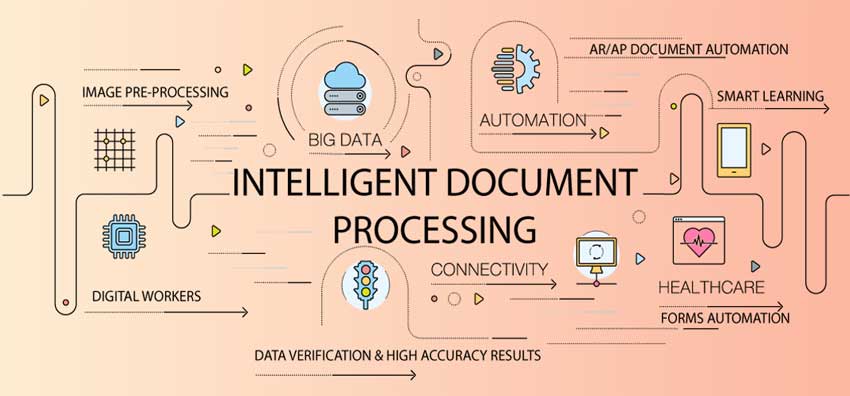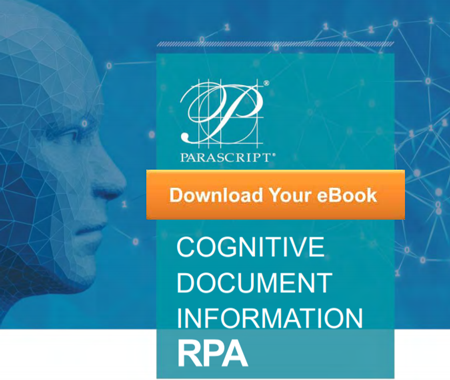Rethinking the value of capture means helping eliminate many manual document-handling tasks such as sorting documents and entering data. Document capture refers to more than converting paper documents to their digital versions. Today, advanced capture is about enabling straight through processing (STP) capabilities so that at key points in automated document processing, business systems gain access to the right data.
Most people are familiar with capture systems and scanning paper documents to create digital versions instead. This fundamental “scan-and-store” approach has been widely used to reduce the costs and inefficiencies of paper-intensive processes. Organizations are finding new advantages with capture–greater intelligence and more agility. The benefits stem from the ability to tap into capture capabilities at any point in any process to increase operational performance. Organizations are benefiting from applying advanced capture techniques at any point in a process or function, not simply at the beginning.
Innovations in AR/AP
Let’s take capture advancements in Accounts Receivable/Accounts Payable (AR/AP) as one example. For organizations dealing with high-volume invoice processing where invoices come from many different vendors, these highly-variant invoices mean that while regular OCR software can extract the data, it fails to interpret context so that the staff are required to enter the data into their business systems or at the very least, review and verify the data. This means that there is little to no straight through processing.
Advanced capture that leverages machine learning can separate invoices from other supporting documents without manual document sorting or using bar codes or separator sheets; extract common invoice data such as header and footer information and cross-validate this with third-party systems for increased precision; as well as dynamically extract line item data from the invoice. Manual tasks are reduced to dealing with exceptions so straight through processing in AR/AP is now a reality.
Expanding Possibilities
Capture has traditionally been regarded as a front-of-the-process, document-based workflow activity and technology, but organizations today are rethinking the fundamental capabilities of capture and how they can be applied in other business processes that are not necessarily a document capture or transactional data capture scenario.
A recent ‘leaders in capture study’ conducted by AIIM International found that companies are expanding the use of capture to processes that are primarily customer-facing and value-added like mortgage origination, loan processing and patient care administration. Get your copy of the study here.
The results make sense. While information management is most commonly associated with things like data security, privacy and compliance, a more expansive definition is emerging that has broader implications in terms of organizational performance and customer experience as well.
Capturing Process Improvements
This new mindset requires that organizations have the ability to understand what information they have throughout the enterprise, and respond with completeness and agility to any number of demands at any point in any process. Here are just a few examples:
Remote Deposit. The Federal Reserve calls remote deposit capture one of most important developments in the banking industry in years. The capability to scan checks and transmit checks for deposit has made going to a bank branch almost obsolete.
Freedom of Information Act. Complying with a FOIA request is an example of how government agencies are rethinking capture with a service point of view. Meeting the demands of a FOIA request can be extremely time-consuming. Rather than spend weeks searching, capture systems automatically identify key documents.
Legal Discovery. A court ordered discovery demand for information is a good example of using capture technology in the context of a mid-process demand for service and can be a winning ability in both litigation and business.
Due Diligence. Banks, credit unions and broker-dealers are under mounting pressure to be increasingly strict with anti-money laundering and counter terrorism. Financial firms find capture systems enable an aggressive approach to due diligence.
Moving Forward
Organizations can get more value out of capture technology, often with the systems they already own, by adopting a broader view of capture. The key to capturing value is the adoption of comprehensive tools and strategies to automate and broaden the application of capture enterprise-wide. Look for solutions and partners that provide the right mix of experience, vision and advanced capabilities that leverage the full value of the technology.
Kevin Craine is the author of the book Designing a Document Strategy and host of the Document Strategy Podcast. He is the managing director of Craine Communications Group. For more information visit CraineGroup.com.
# # #
If you found this article interesting, here’s a brief video on invoice processing automation today:
Perhaps, you will find this eBook useful. The Cognitive Document Information | RPA eBook examines cognitive document information and the role it plays in Robotic Process Automation (RPA).





